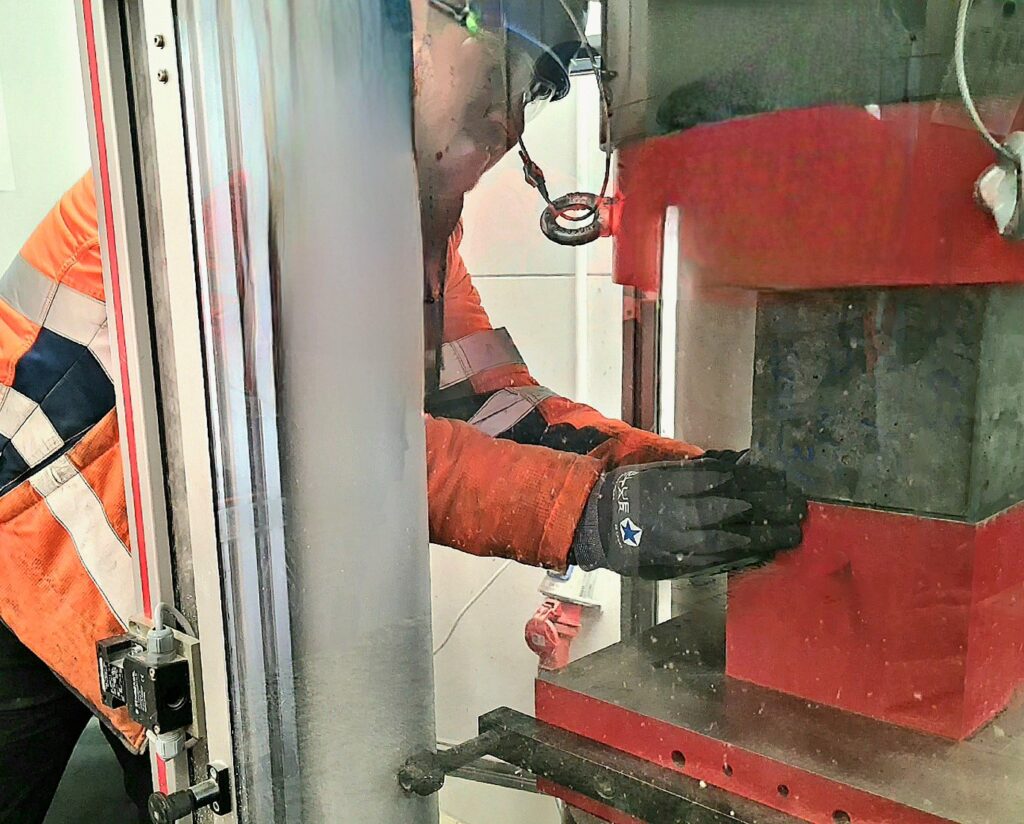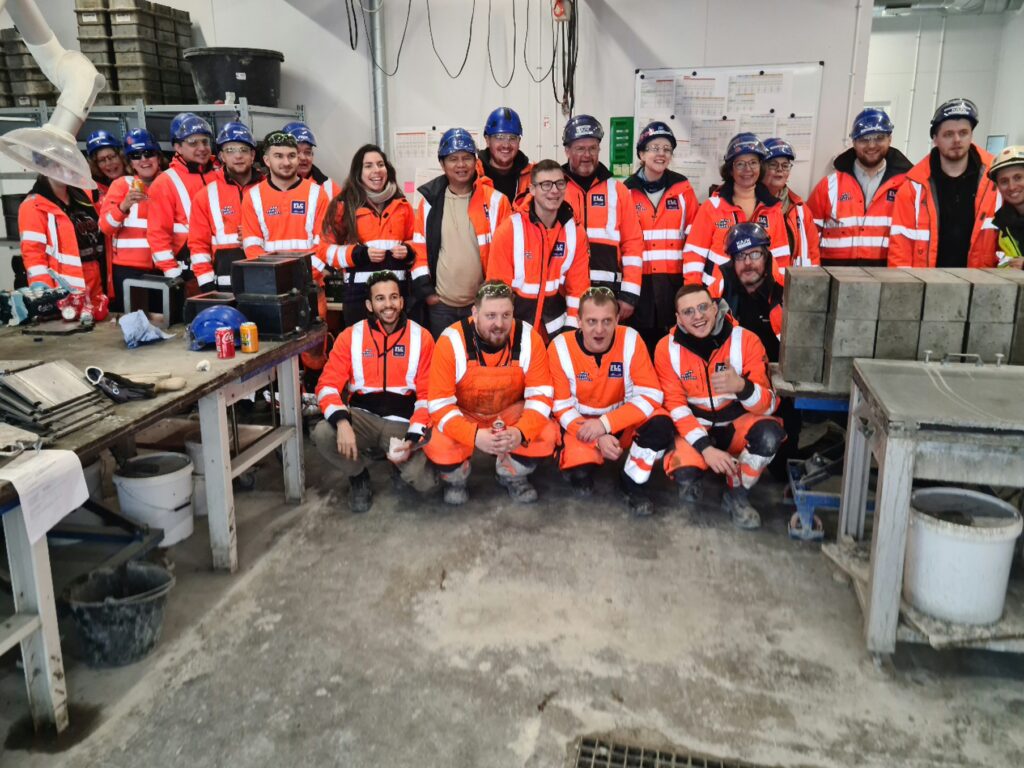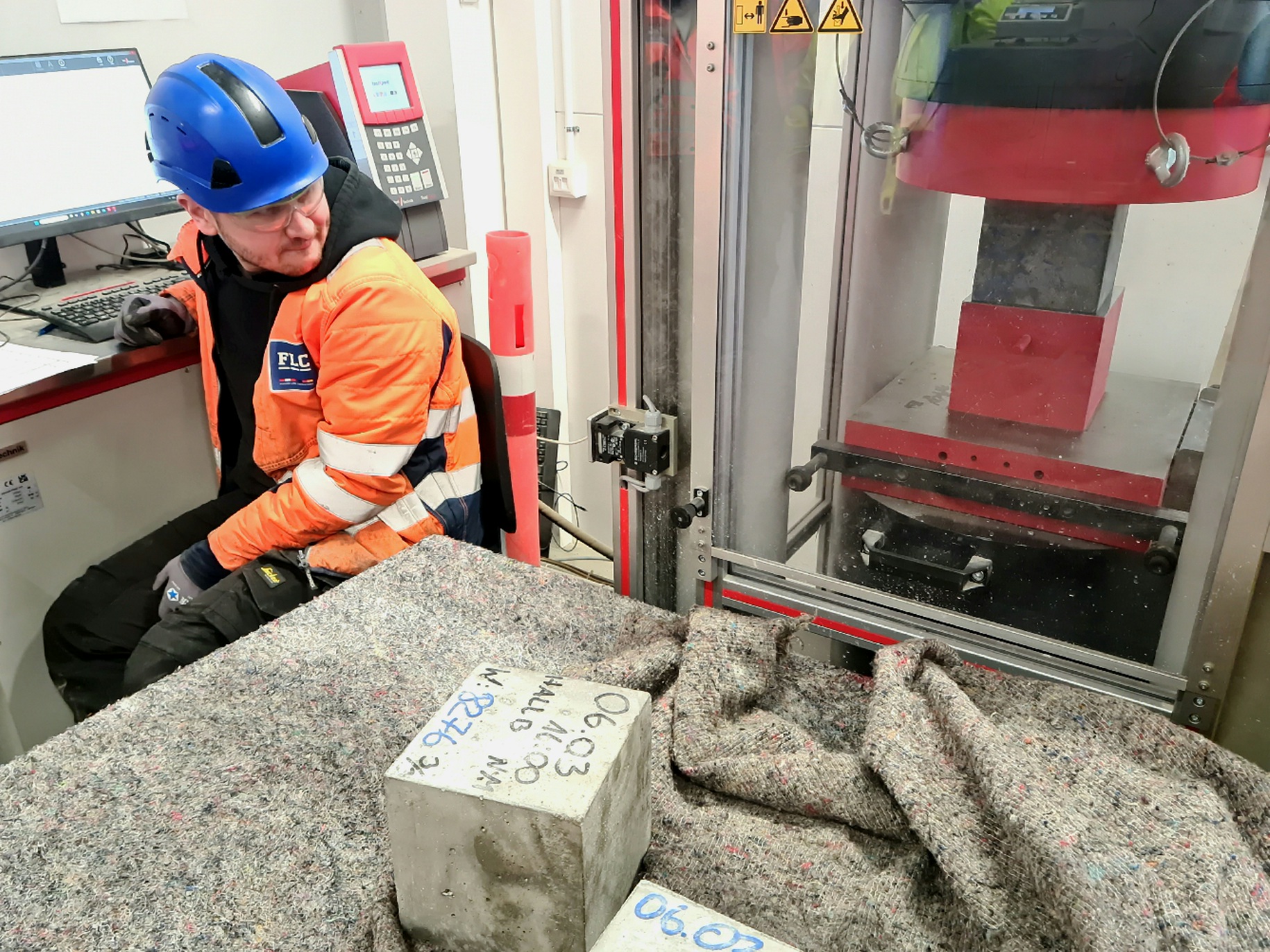It goes without saying that the tunnel under the Fehmarn Belt should be able to stand the test of time.
It is in fact set to last for at least 120 years.
Therefore, the concrete used for casting the tunnel segments are tested repeatedly at laboratories making sure it is of the highest quality.
Around the clock, three laboratories, next to the big batching plants at the tunnel factory, are casting small concrete cubes … just to crush them again.
Recently these cubes marked quite a milestone as cube number 1000 was crushed within a period of 28 days.
The 1000 crushed cubes were made from the basic mix design BMD13. This mix is used for the standard tunnel elements which are to be immersed into the Fehmarn Belt.
Like its siblings the cube number 1000 was placed under a computer monitored piston that applied pressure on the cube. The pressure was rising until a little “tik” was heard from the cube, followed by cheering, cake and celebration in the laboratory.

Not long after, everyone went back to work again.
Every day and night, this little “tik” is heard many times over in the laboratory. Each time a segment is cast for the tunnel, it is important to ensure that the quality of the concrete is superb.
The laboratory technicians are following the numbers on the computer screen to see if the strength of the concrete withstands a fulfill a strength class of C40/50 as each cube shall withstand a pressure of at least 50 MPa.
This procedure and the work of more than 50 employees ensures that the tunnel is cast with concrete of the best quality that can stand the test of time.

Facts:
– Around 3.000 m3 of concrete will be used per segment, meaning 27.000 m3 per total element
– The little concrete cubes measures 150x150x150 mm.
– Each standard tunnel element consists of 9 segments
– Of the 89 immersed tunnel elements, 79 are standard elements – 217 meters long, 42 meters wide and 9 meters high, weighing roughly 73,000 tons.




